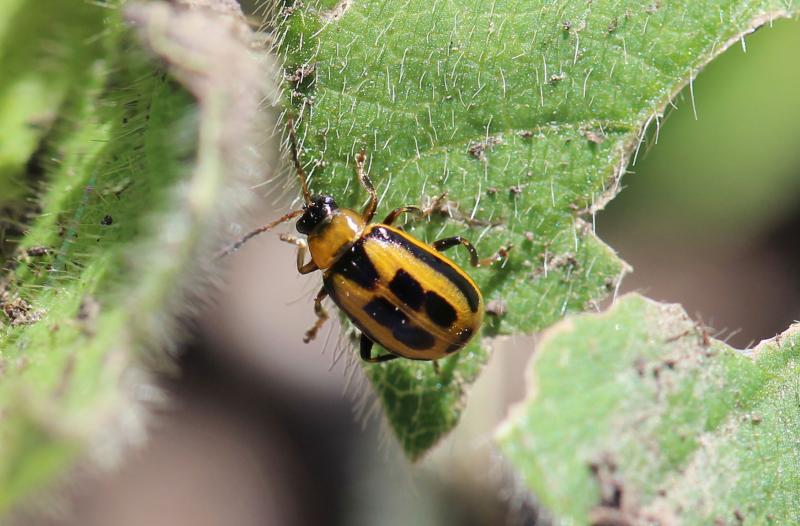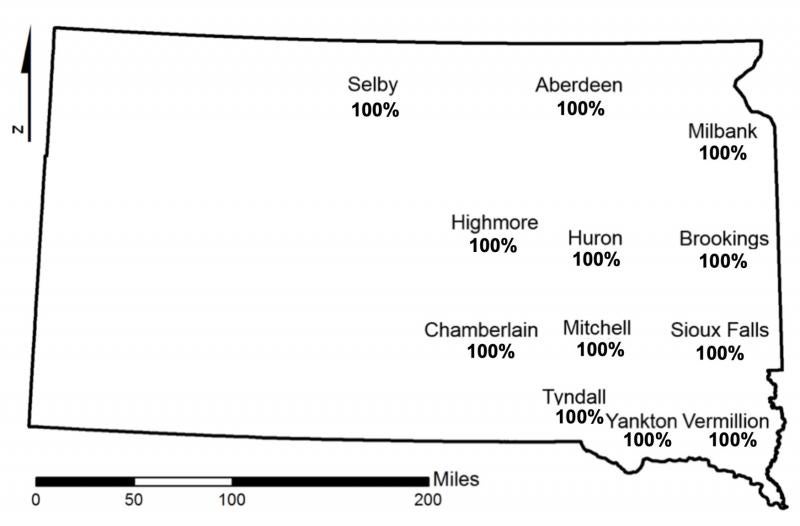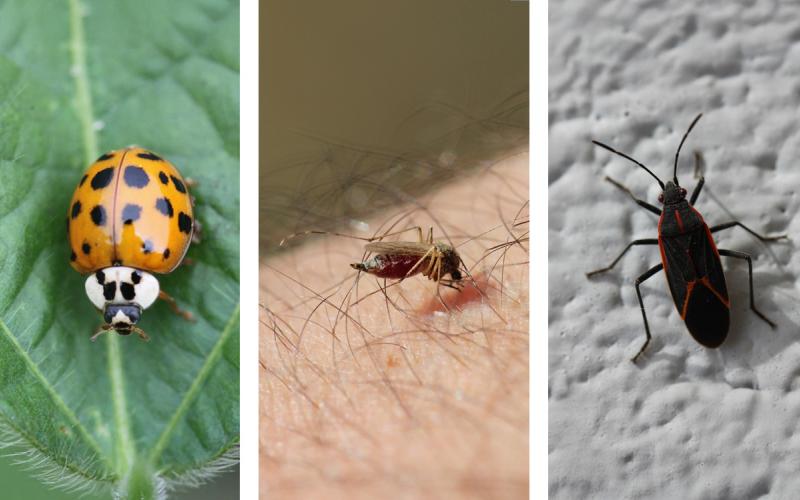
Overwintering bean leaf beetle adults will soon start emerging as they do each spring. This overwintering generation is capable of causing serious defoliation injury to seedling soybean plants (Figure 1). However, the population density of overwintering bean leaf beetles is negatively affected by cold winter air temperatures. Therefore, an estimate of the emerging populations can be made based on how cold the recent winter was. The first step in calculating bean leaf beetle mortality is recording the air temperatures that drop below 14 °F (-10 °C). At such temperatures, bean leaf beetle adults freeze and subsequently die. Although the adults can survive cold temperatures by hiding under plant debris and loose soil, especially in wooded areas, they cannot survive sustained sub-freezing temperatures (14 °F or colder).
Predicted Population Mortality

Lam and Pedigo (2000) developed a survival model for the bean leaf beetle to predict overwintering population mortality. This model functions by accounting for the accumulation of sub-freezing temperatures, and the known response of overwintering bean leaf beetles in both exposed (under crop residue in a field) and protected (residue in wooded areas) environments to such temperatures. Using this model, the predicted mortality rates for the 2018-2019 overwintering bean leaf beetle populations in Eastern South Dakota appeared to be 100% at every location (Figure 2). This is similar to what was observed for the 2017-2018 winter. Although mortality is expected to be high, there is still the potential for bean leaf beetles to emerge if they had adequate cover during the cold temperatures. Areas that had substantial snow cover during weeks with sub-zero temperatures still have a likelihood of experiencing early season bean leaf beetle populations.
Scouting and Management
Based on 2018 bean leaf beetle populations, farmers in Southeast South Dakota should scout early in the season. In 2019, it is likely that some populations will be observed again in the Southeast. Early season bean leaf beetle scouting should begin at soybean emergence and continue through the early vegetative stages. The overwintering generation of bean leaf beetles can be effectively managed using insecticide seed treatments or foliar insecticides. For a current list of products that are labeled to manage bean leaf beetles in soybean, please refer to the 2019 South Dakota Pest Management Guide: Soybeans.


